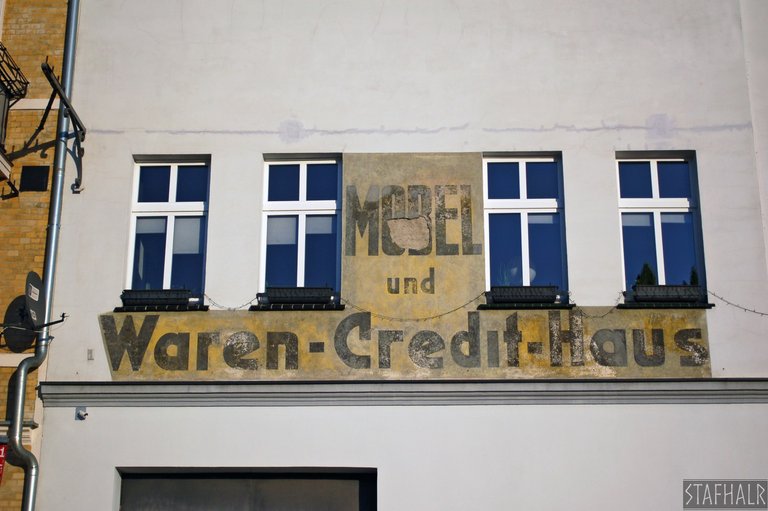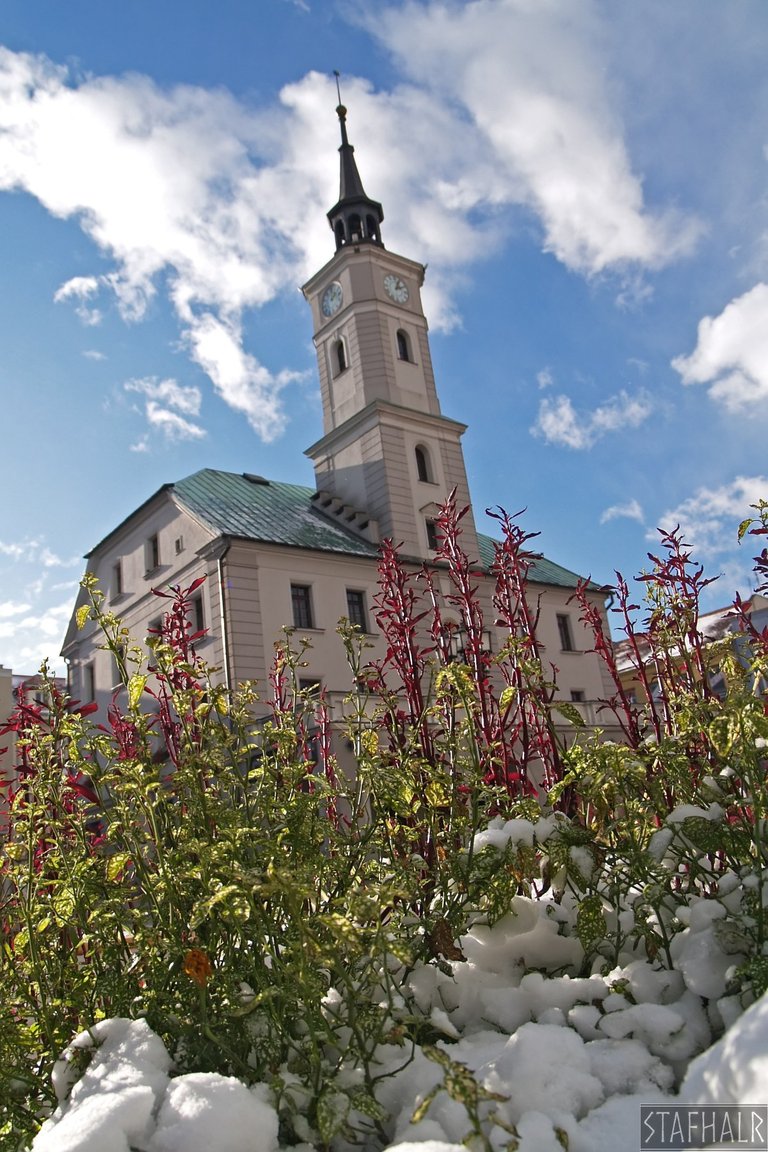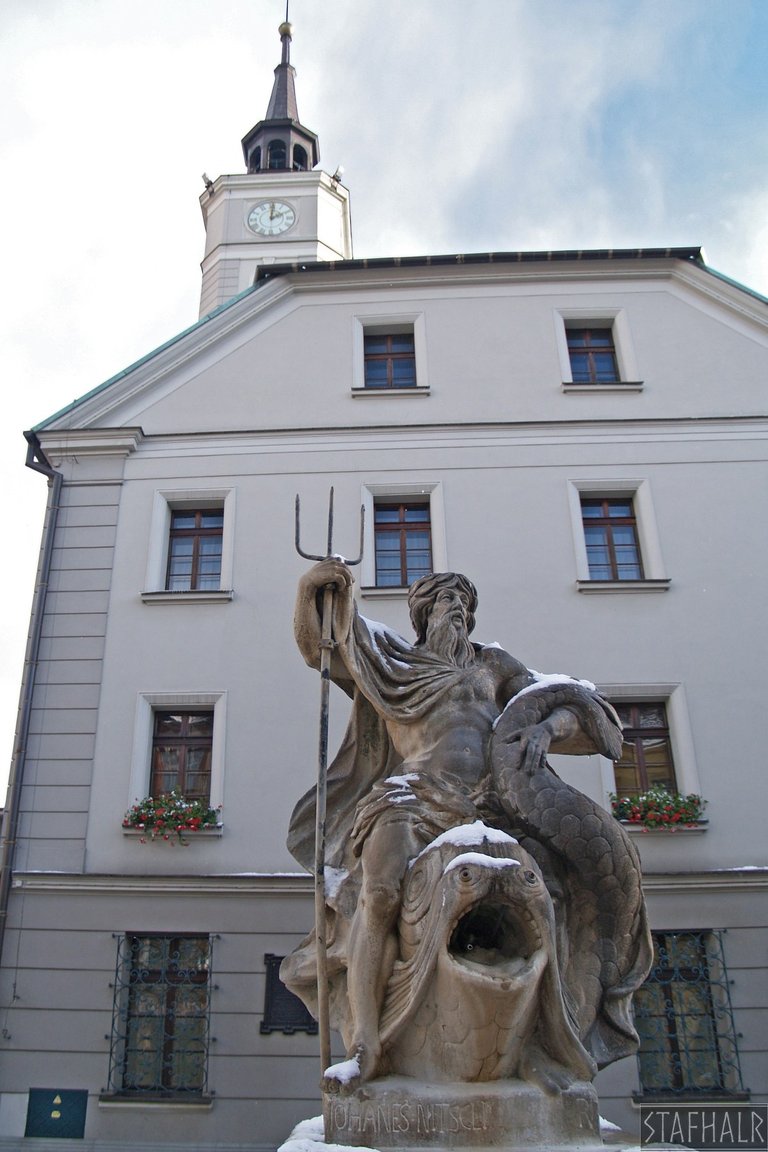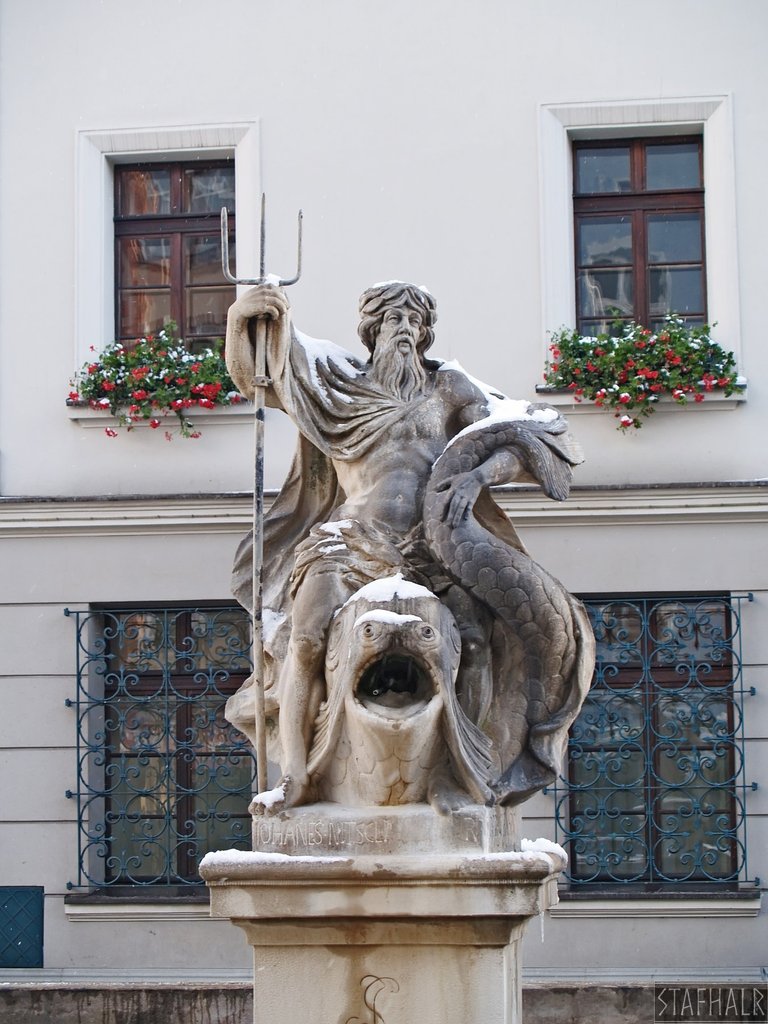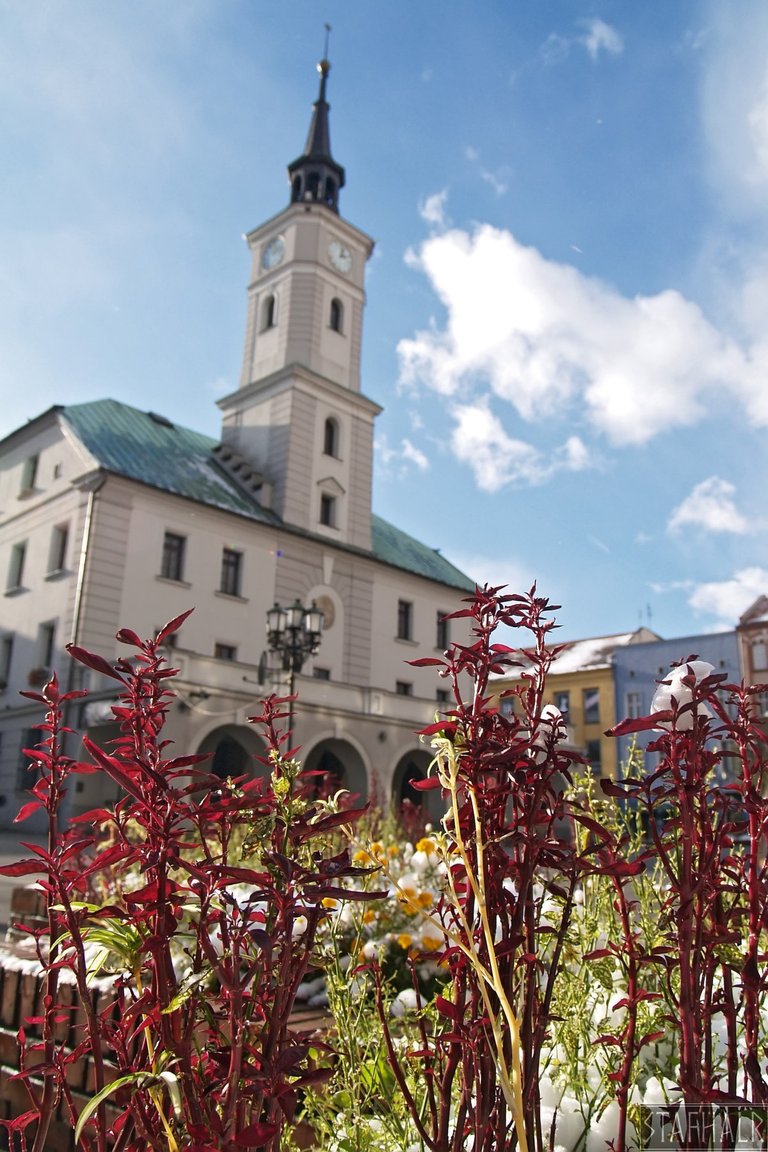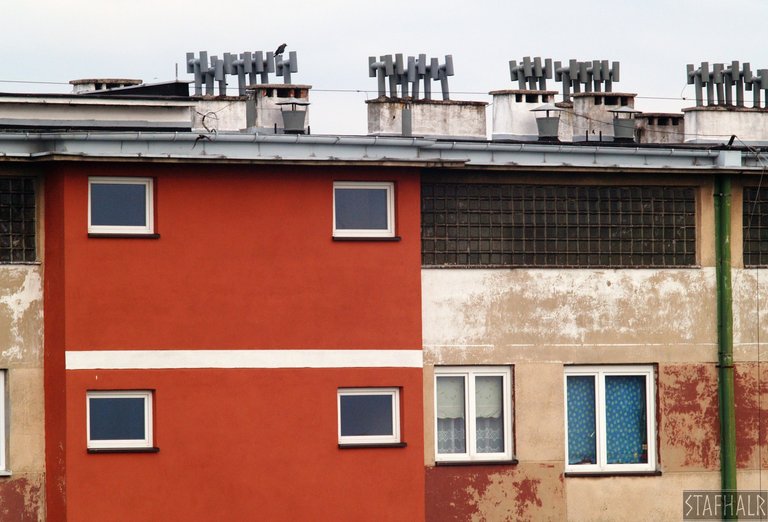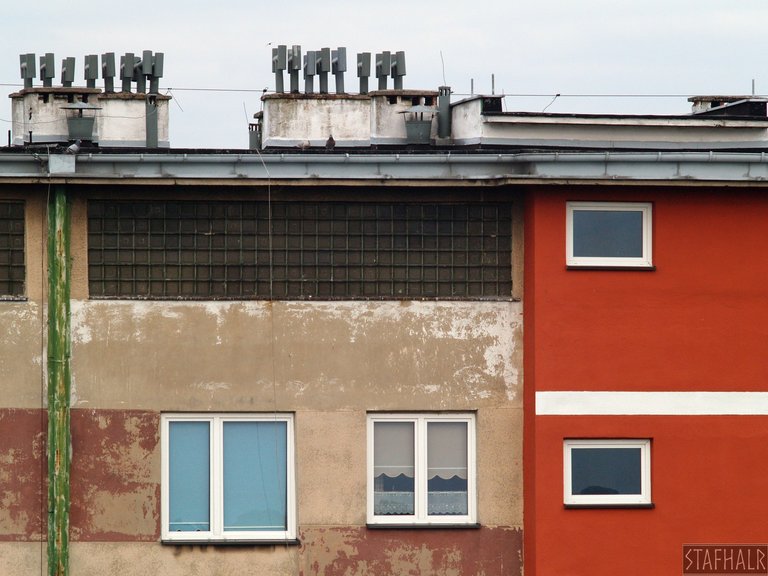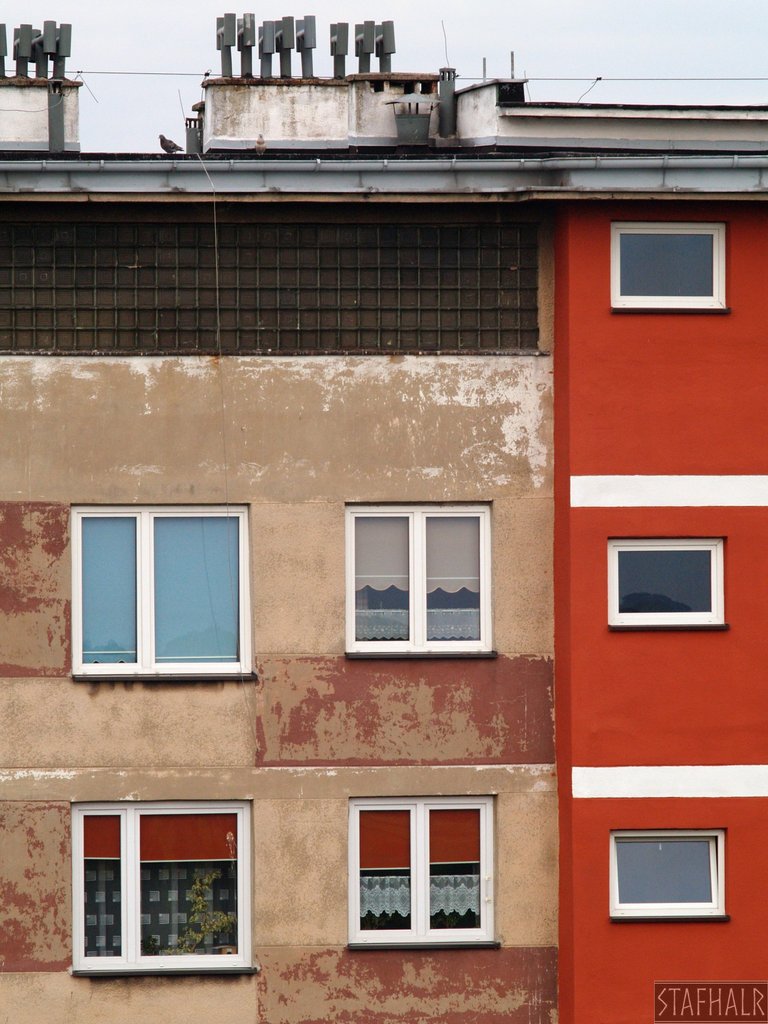Gliwice - my hometown - appeared several times in my entries, I am coming back to it again today. Apart from the photographs which I have assigned to specific topics, there are a few that stubbornly do not want to fit into any series, but I like them and would like to put them here. Most of the photos are from 2005-2006.
Here they are, and I'll tell you what they represent.
Gliwice – moje rodzinne miasto – pojawiało się w moich wpisach kilkukrotnie, wracam do niego dzisiaj ponownie. Oprócz fotografii z Gliwic, które przyporządkowane mam do danych tematów, kilka uparcie nie chce mi pasować do żadnego cyklu, a lubię je i chciałbym je tutaj umieścić. Większość zdjęć pochodzi z lat 2005-2006.
Oto one, a przy okazji opowiem, co przedstawiają.
The two photos below were taken at the corner of Kościuszki and Korfantego streets. Before the war, it was Friedrichstrasse, because Gliwice was then part of Germany (we did not manage to take it back from the Germans in 1918 - after regaining independence). At that time, the Military Corner restaurant was located in the corner tenement house, with the entrance through this gate with decorative swirls. In the times of the Polish People's Republic, the place was called Oaza and my parents organized their wedding there. Now, years later, Wanilia operates there.
Dwa poniższe zdjęcia wykonane zostały na rogu ulic Kościuszki i Korfantego. Przed wojną była to ulica Friedrichstrasse, ponieważ Gliwice były wtedy częścią Niemiec (nie udało nam się ich odebrać Niemcom w 1918 roku – po odzyskaniu niepodległości). W kamienicy narożnej, do której wchodziło się tą właśnie okutą ozdobnymi zawijasami bramą, mieściła się wówczas restauracja Narożnik Wojskowy. W czasach PRL lokal nosił nazwę Oaza i swoje wesele zorganizowali tam moi rodzice. Teraz, po latach, działa tam Wanilia.
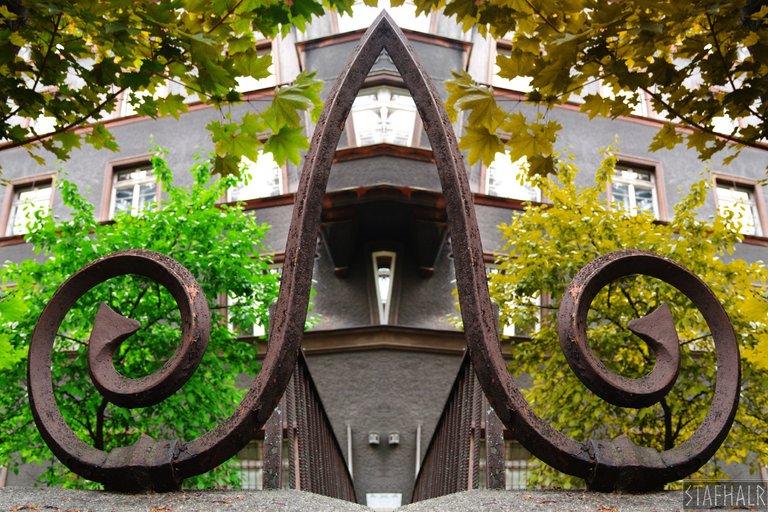
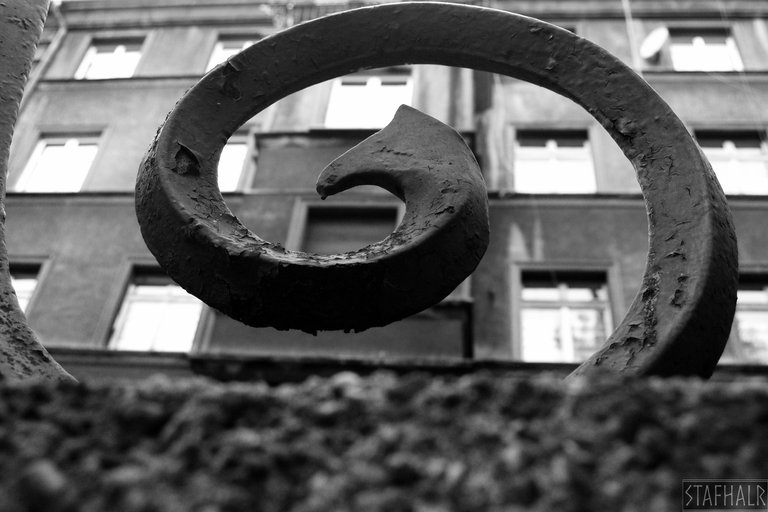
The German traces continue - today's Okopowa Street, near the railway station. Before the war, there was a furniture store and a credit agency there. During the renovation of the building in 2016, it was decided to reveal and renovate the old inscription. Interestingly, the motivation for unveiling the inscription (which was supported by the residents) was not necessary sympathy for Germans, but respect for history.
Śladów niemieckich ciąg dalszy – dzisiejsza ulica Okopowa, okolice dworca kolejowego. Przed wojną znajdował się tam sklep meblowy wraz z agencją kredytową. Podczas renowacji budynku w 2016 roku, zdecydowano się dawny napis odsłonić i odnowić. Co ciekawe, motywacją dla odsłonięcia napisu (za czym opowiedzieli się mieszkańcy) nie była sympatia dla niemieckości, lecz szacunek dla historii.
Finally – the Gliwice radio station. It is here - at least so the inhabitants of Gliwice claim - that World War II began. In any case, a German false flag sabotage operation took place here, in which German agents in disguise pretended to be "Polish Silesian insurgents" and, after a successful "attack" on the radio station, broadcast a message announcing their occupation of the city. It was one of a series of provocations used by the Germans to appear to justify the attack on Poland in September 1939. Today, the radio station is probably the most important landmark of Gliwice.
Wreszcie – radiostacja gliwicka. To tutaj – przynajmniej tak twierdzą Gliwiczanie - zaczęła się II wojna światowa. W każdym razie miała tu miejsce niemiecka operacja dywersyjna false flag, w której agenci niemieccy w przebraniu udawali „polskich powstańców śląskich” i po udanym „napadzie” na radiostację nadali komunikat, w którym ogłosili zajęcie przez nich miasta. Była to jedna z szeregu prowokacji, których Niemcy użyli do stworzenia pozorów uzasadnienia napaści na Polskę we wrześniu 1939 roku. Dzisiaj radiostacja jest chyba najważniejszym landmarkiem Gliwic.
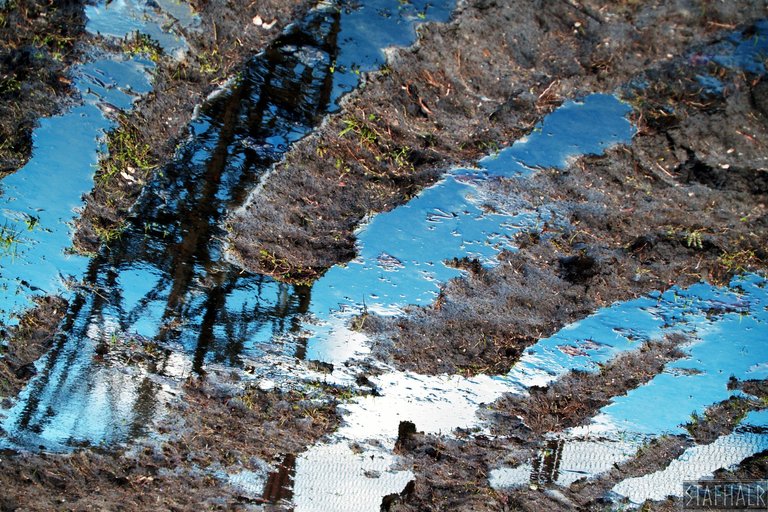
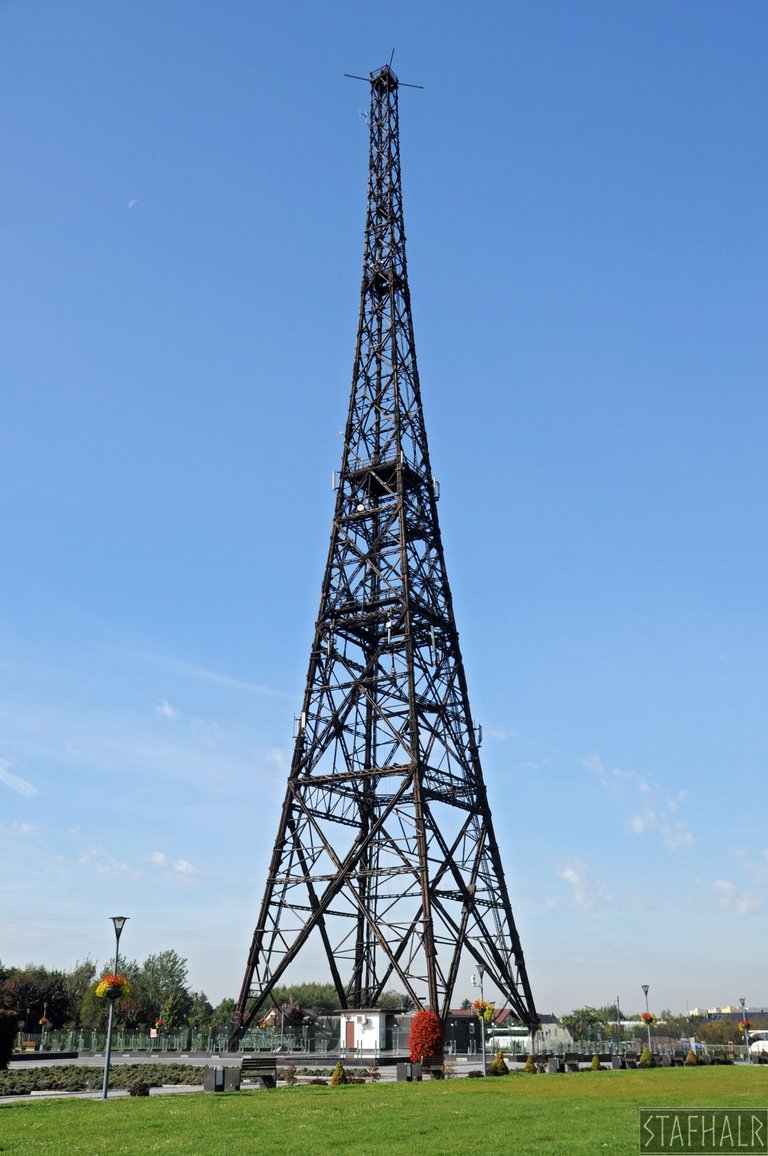 | 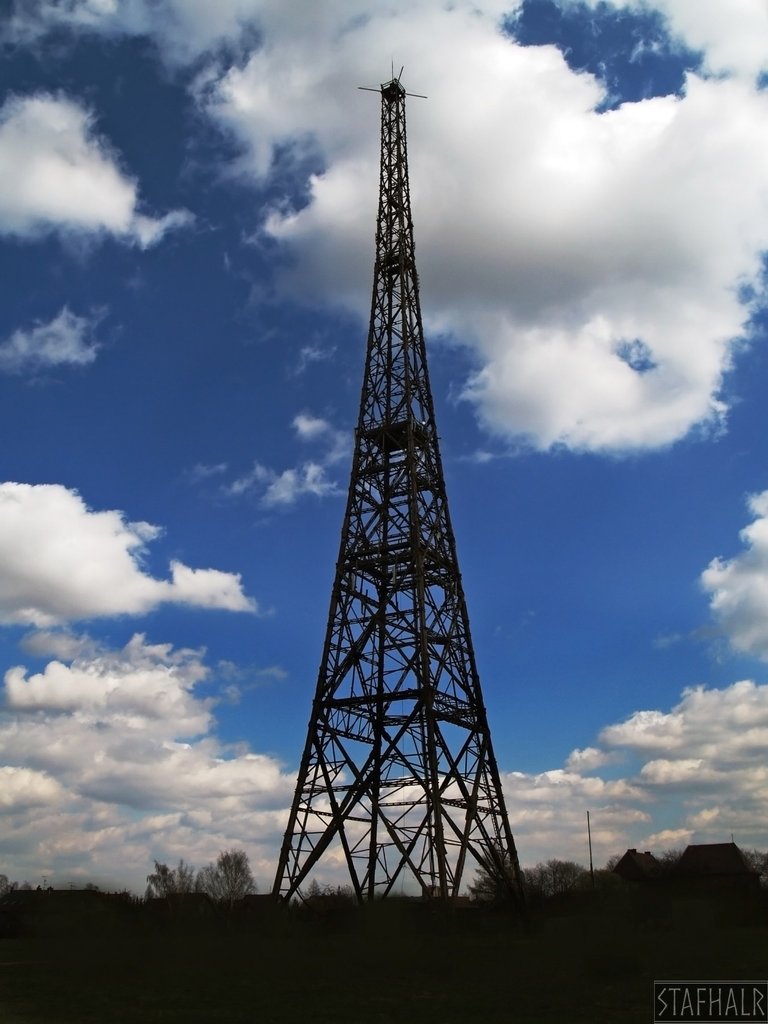 |
|---|
The town hall on the Market Square in Gliwice dates back to the turn of the 18th and 19th centuries. The building was rebuilt and renovated in 1946. A characteristic element of the Market Square is the fountain with Neptune. The sculpture dates back to 1794 and was created by the baroque sculptor Johannes Nitsche. The Gliwice market square was bustling with life in my youth, in the late 1990s and around 2000. Lots of young people came there to have fun and enjoy each other's company, usually with a beer or wine in their hands, and Neptune was a traditional point of finding each other with friends in pre-cell-phone times. Today, the Market Square is much quieter (which some people seems to like... but not me) because the average age of residents has increased dramatically and their number has decreased. Only during the first year after the outbreak of the war in Ukraine, thanks to the "reinforcements" provided by Ukrainian youth, this place became a little more lively and for a moment it resembled the old days.
Pochodzący z przełomu XVIII i XIX wieku ratusz na Rynku w Gliwicach. Budynek został odbudowany i odnowiony w 1946 roku. Charakterystycznym elementem Rynku jest fontanna z Neptunem. Rzeźba pochodzi z 1794 roku, a jej autorem jest rzeźbiarz barokowy Johannes Nitsche. Rynek gliwicki w czasach mojej młodości, pod koniec lat 90 i około roku 2000 tętnił życiem. Przychodziło tam się bawić i cieszyć swoim towarzystwem mnóstwo młodych ludzi, zwykle z piwkiem lub winkiem w rękach, a Neptun był tradycyjnym punktem wzajemnego odnajdywania się ze znajomymi w czasach przedkomórkowych. Dzisiaj na Rynku jest znacznie spokojniej (co niektórym się podoba…), gdyż średnia wieku mieszkańców radykalnie wzrosła, a ich liczba spadła. Jedynie w ciągu pierwszego roku od wybuchu wojny na Ukrainie, dzięki posiłkom w postaci młodzieży ukraińskiej, to miejsce się trochę się ożywiło i przez chwilę przypominało dawne lata.
The Church of the Savior of the Evangelical-Augsburg parish, dating from 1790, located at Jagiellońska Street.
Pochodzący z 1790 roku Kościół Zbawiciela parafii Ewangelicko-Augsburskiej położony przy ulicy Jagiellońskiej.
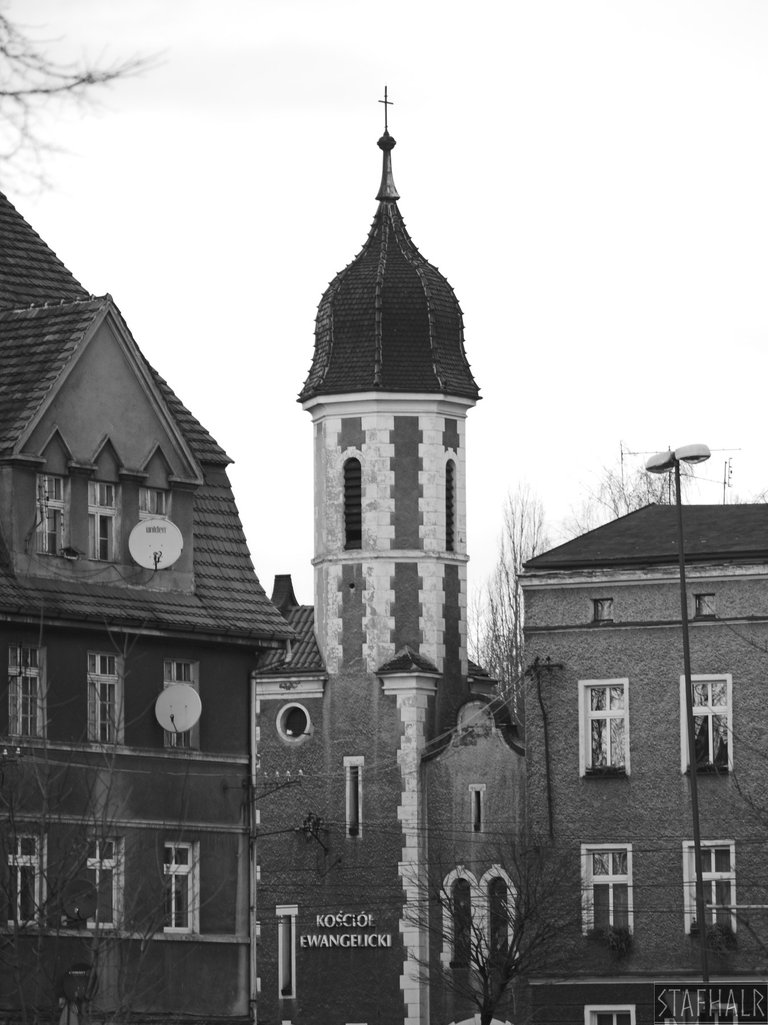
Gliwice was formerly an industrial city. It is now history, but its traces can still be seen here and there:
Gliwice były dawniej miastem przemysłowym. Obecnie to historia, ale jej ślady można jeszcze gdzieniegdzie zobaczyć:
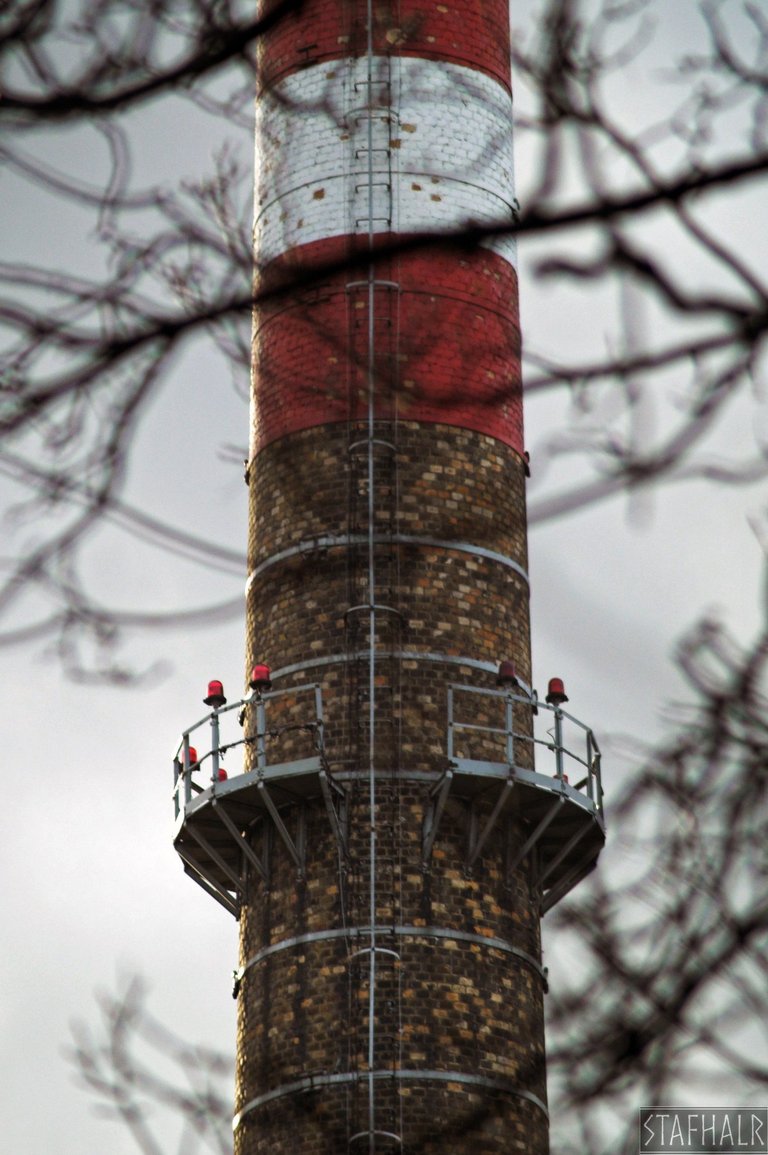
The river flowing through Gliwice is the Kłodnica. Below is a photograph I took on an August night in 2005 using a 13-second exposure with my first digital camera, a Minolta Z10. Technically it's not the highest quality, but I'm sentimental about it. Here we see Kłodnica from the bridge on Dworcowa Street in the light of the full moon.
Rzeka przepływająca przez Gliwice to Kłodnica. Poniżej prezentuje fotografię, którą wykonałem nocą sierpniową w roku 2005 za pomocą 13-sekundowej ekspozycji moim pierwszym cyfrowym aparatem, Minoltą Z10. Technicznie nie jest najwyższej jakości, ale mam do niego sentyment. Widzimy tutaj Kłodnicę z mostu na ulicy Dworcowej w świetle pełni księżyca.
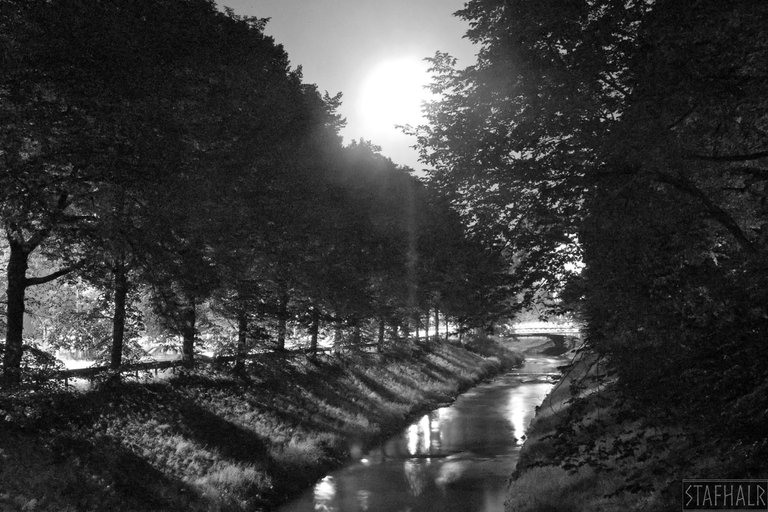
The second night photo - this time 30 seconds of exposure - shows fragments of the building of the Faculty of Chemistry of the Silesian University of Technology in Gliwice against the background of the night sky.
Drugie zdjęcie nocne – tym razem aż 30 sekund ekspozycji – przedstawia fragmenty budynku Wydziału Chemii Politechniki Śląskiej w Gliwicach na tle nocnego nieba.
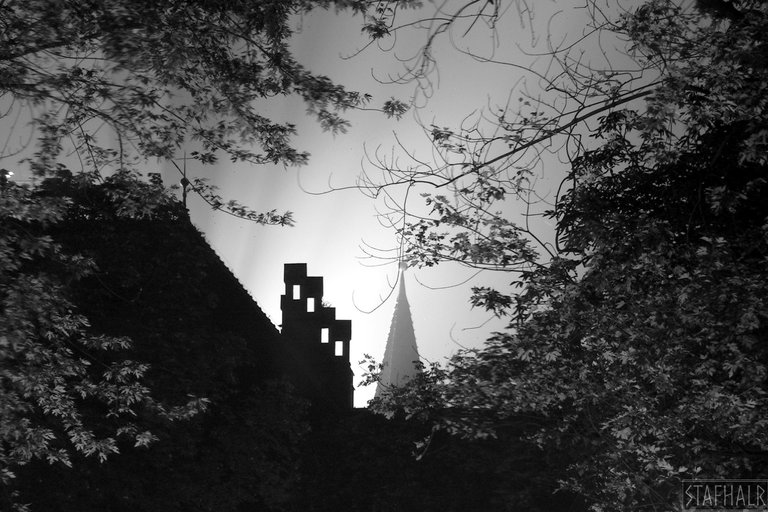
The last three photographs present fragments of apartment blocks in the Sikornik estate from the 1970s.
Ostatnie trzy fotografie prezentują fragmenty bloków mieszkalnych na osiedlu Sikornik pochodzące z lat 70.
All photographs © stafhalr
Previous entries with photos from Gliwice:
